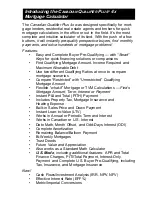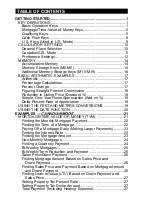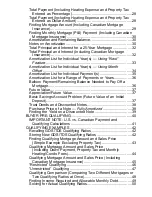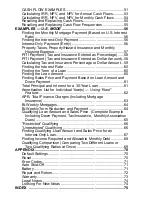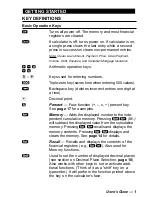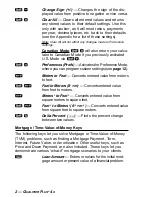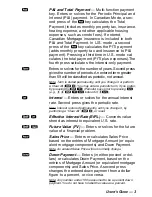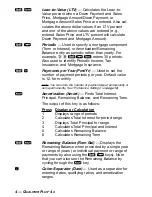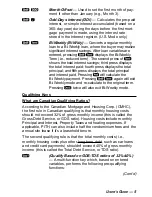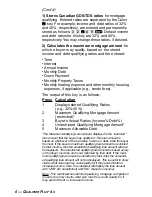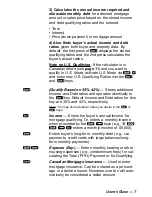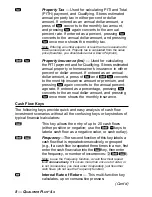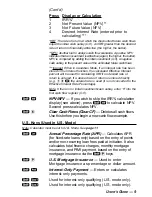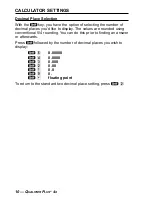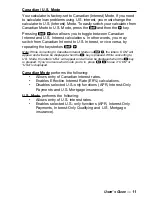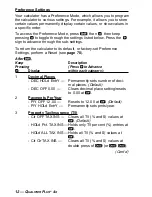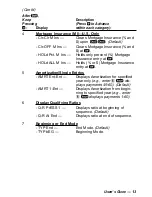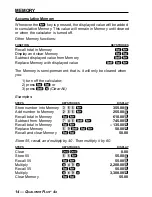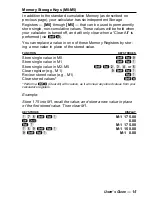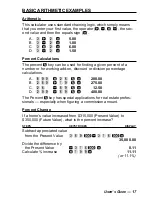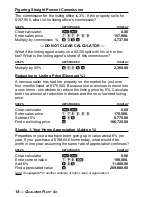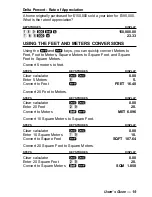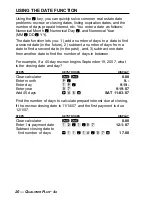
U
SER
’
S
G
UIDE
— 5
s )
Month Offset — Used to set the first month of pay-
ment if other than January (e.g., Month 3).
s :
Odd-Days Interest (ODI) — Calculates the pre-paid
interest, or simple interest accumulated (based on a
360-day year) during the days before the first mort-
gage payment is made, using the interest rate
stored in the Interest register. (U.S. Mode only.)
s T
Bi-Weekly (Bi-Wkly) — Converts a regular monthly
loan to a Bi-Weekly loan, where the buyer may realize
significant interest savings. After loan variables are
entered, pressing
s T
displays the Bi-Weekly
Term (i.e., reduced term). The second press of
T
shows the total interest savings; third press displays
the total interest paid; fourth press displays the total
principal; and fifth press displays the total principal
and interest paid. Pressing
p
will calculate the
Bi-Weekly payment. Pressing
s T
again will exit
Bi-Weekly mode and re-calculate to the original term.
Pressing
o
twice will also exit Bi-Weekly mode.
Qualifying Keys
What are Canadian Qualifying Ratios?
According to the Canadian Mortgage and Housing Corp. (CMHC),
the first rule in Canadian qualifying is that monthly housing costs
should not exceed 32% of gross monthly income (this is called the
Gross Debt Service, or GDS ratio). Housing costs include monthly
Principal and Interest, Property Taxes and heating expenses. If
applicable, PITH can also include half the condominium fees and the
annual site lease if it’s a leasehold tenure.
The second qualifying rule is that the total monthly costs (i.e.,
monthly housing costs
plus other long-term debt, such as car loans
and credit card payments) shouldn’t exceed 40% of gross monthly
income (this is called the Total Debt Service, or TDS ratio).
q
(Qualify Based on GDS:TDS ratios of 32%-40%)
— A multi-function key which, based on entered
variables, performs the following pre-qualifying
functions:
(Cont’d)


